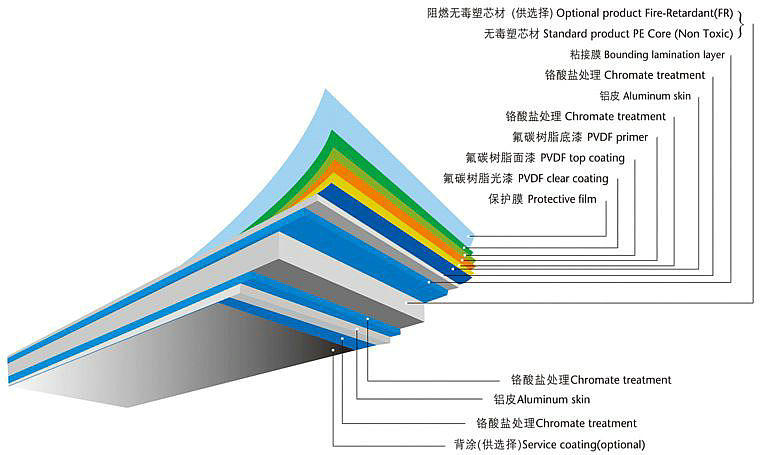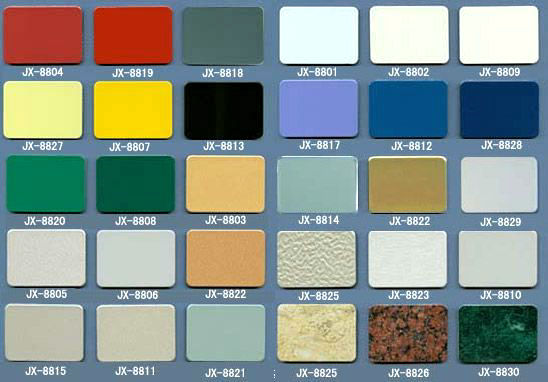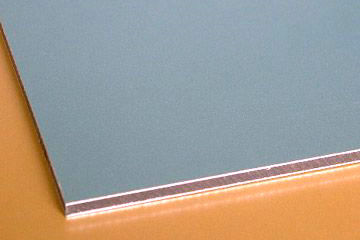
Aluminum Composite panel is a type of flat panel that consists of two thin aluminium sheets bonded to a non-aluminium core. ACPs are frequently used for external cladding or facades of buildings, insulation, and signage.[3] If the core material is flammable, usage may be problematic as a building material and some jurisdictions have banned their use.
Aluminum sheets can be coated with polyvinylidene fluoride (PVDF), fluoropolymer resins (FEVE), or polyester paint. Aluminum can be painted in any kind of color, and ACPs are produced in a wide range of metallic and non-metallic colors as well as patterns that imitate other materials, such as wood or marble. The core is commonly low-density polyethylene, or a mix of low-density polyethylene and mineral material to exhibit fire retardant properties.

ACP is mainly used for external and internal architectural cladding or partitions, false ceilings, signage, machine coverings, container construction, etc. Applications of ACP are not limited to external building cladding, but can also be used in any form of cladding such as partitions, false ceilings, etc. ACP is also widely used within the signage industry as an alternative to heavier, more expensive substrates. These structures made optimal use of ACP through its cost, durability, and efficiency. Its flexibility, low weight, and easy forming and processing allow for innovative design with increased rigidity and durability.





